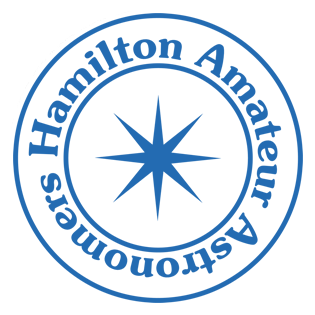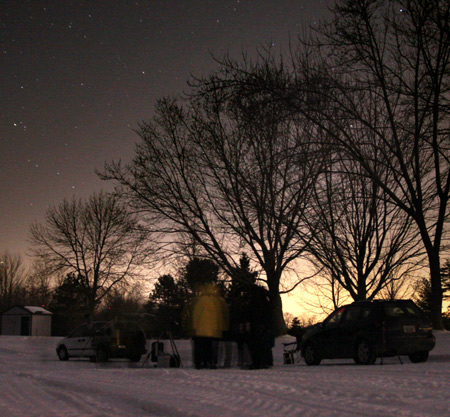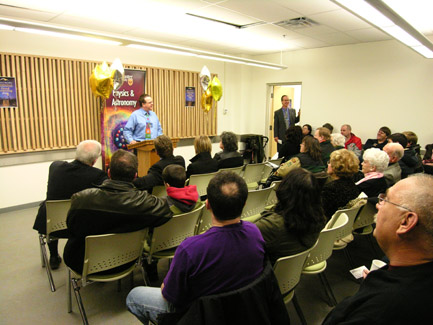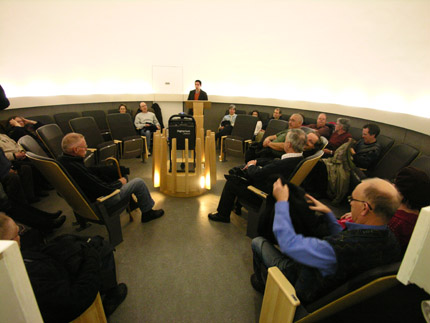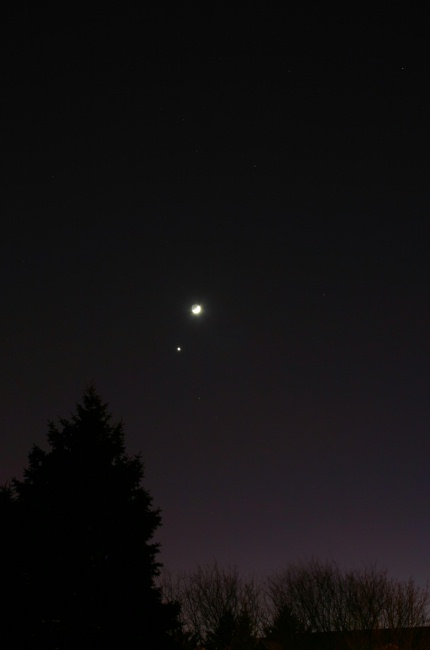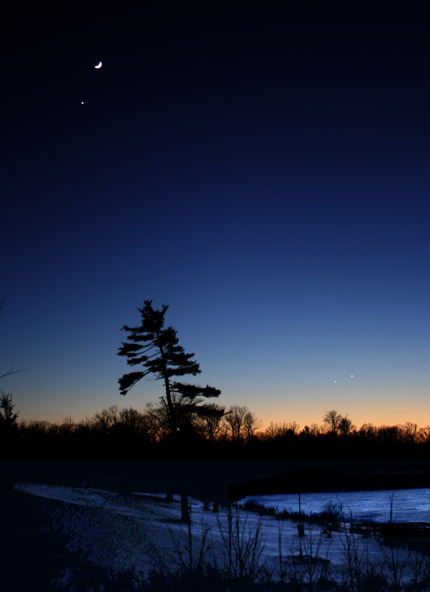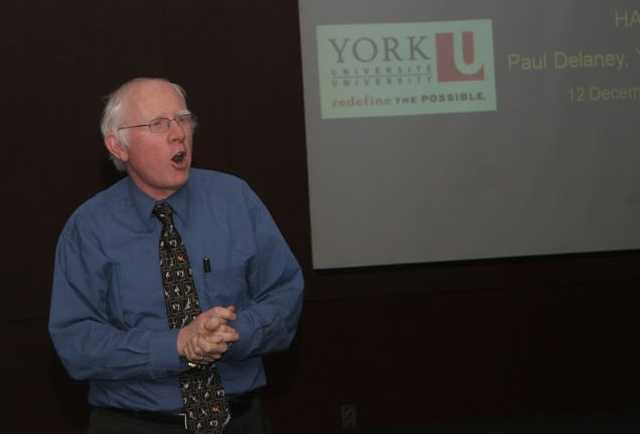
Paul Delaney decribes the recent findings on Mars at the HAA December General meeting
The HAA General meeting held on December 12 was well attended with only a handful of empty seats in the room on what turned out to be one of the few clear evenings of the last couple of months.
Jim Walmsley and Don Pullen welcomed attendees at the door and people who arrived prior to the meeting start at 7:30pm received free tickets for door prizes. Available since the November meeting (along with the natty HAA toques and clothing) is the HAA Calendar for 2009. This impressive astronomical calendar is both beautiful and informative. Kudos to the astrophotographers for their images and to the members who worked hard to put the calendar together.
HAA President Steve Germann got things under way by welcoming attendees, going over a bit of club business and touching briefly upon the HAA?s plans for the upcoming year, especially as 2009 is the the International Year of Astronomy.
Then Steve introduced our first presenter for the night, HAA Observing Director John Gauvreau. John opened with a spirited and informative discussion, partly held in an energetic ?question and answer? format about the moon and other celestial bodies. Most people are familiar with the ?harvest moon? of late summer and fall, but are you aware that the full moon at this time of year goes by several different monikers such as the ?frost moon? or ?hunter?s moon?? Or how about the ?bomber?s moon? as intoned rather ominously by Tim Philp? Then John continued with his presentation of the ?the Sky this Month? for December. There are beautiful conjunctions of the moon and planets, especially a crescent moon and Venus on New Year?s Eve. John indicated the many interesting objects (including several pretty open star clusters) that can be seen as an observer scans the Milky Way, which at this time of year ?flows? through constellations of Andromeda, Cassiopeia, Perseus, the horns of Taurus and then Auriga and into the feet of Gemini, the Twins. You don?t need a high-powered telescope to enjoy theses sights, and John emphasized that this rich part of the night sky can be enjoyed with an ordinary pair of binoculars.
At the completion of John Gauvreau?s talk, the draws were held (thanks to our gracious Alex Tekatch) and during a short break members got up to have some coffee (free) and touch base with other members and chat about their various astro-pursuits.
When the break was over Steve introduced our second presenter of the evening, Paul Delaney, Astronomer and Lecturer from York University and his talk on Mars.
In a very informative and entertaining presentation, Mr. Delaney talked about the history of observation of a planet that looms large in human consciousness over the ages. Paul compared the Mars of myth and legend with the factual data that has been garnered by astronomers over the course of the twentieth century. He showed images from the recent Mars Phoenix Lander, the Viking Landers in the 1970?s, the Mars Rovers and the orbiting Mars spacecraft such as Mars Reconnaissance Orbiter and Mars Express. The fabulous images and wealth of scientific data garnered by these spacecraft are helping scientists understand the past geology and the current environment.
As Professor Delaney described with the aid of a series of excellent images, Mars is in some respects comparable to Earth, but much colder and much drier. Billions of years ago Mars may have been much more similar to Earth, with flowing water and a thicker atmosphere, but something happened to cause the planet to kind of ?freeze-dry?. What caused this? Does it have something to do with the wobble in the planet?s rotation? The earth has its relatively large moon to steady its rotation. Mars only has two very small moons that have do not provide the same steadying effect. Did a large asteroid or comet slam into the northern hemisphere, with calamitous effects? Is the planet just too small to create much of it?s own internal heat, thus the planet lacks a strong magnetosphere that in the case of the earth helps protect our planet?s atmosphere from solar storms? Maybe the Mars Science Rover due to be launched in 2010 will give us more clues about Mars, then and now.
Mr. Delaney also mentioned that York University is equipped with a couple of telescopes including a 40 inch Meade, which is made available to the public once a week. I am sure some HAA members will be interested in checking this scope out.
At the conclusion of Paul Delaney?s presentation, which was very well received, Steve invited everyone to an after-meeting get-together at Kelsey?s where people could continue to discuss their favourite astro topic over some tasty food and drinks. Mr. Delaney was graciously open to further questions about Mars at Kelsey?s, (I had another question about some of the findings of Mars Polar Lander regarding the arctic soil conditions). That was great!
To sum up, a really solid meeting, very enjoyable, and very informative. A great way to close out our final general meeting for 2008 and augurs well for 2009 (IYA).
